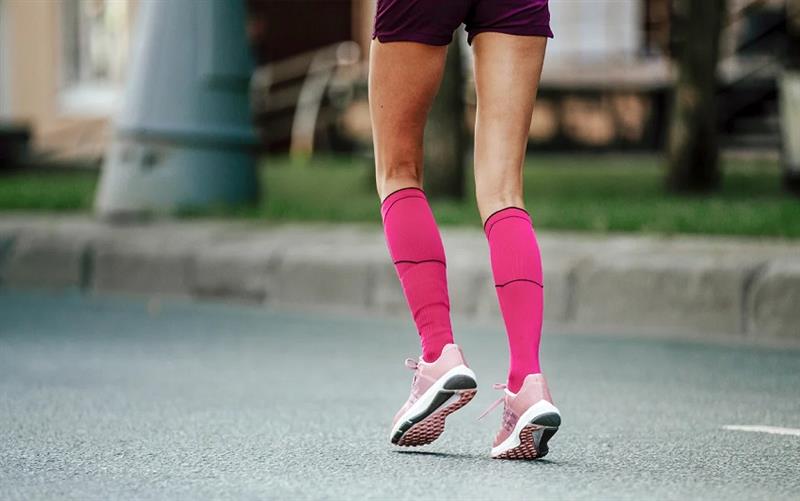
Compression socks are more than just a fashion statement; they offer numerous health benefits by improving blood circulation and reducing the risk of various conditions such as deep vein thrombosis (DVT) and edema. However, choosing the right compression socks for different occasions is essential to maximize comfort and health benefits.
Choosing the right compression socks for every occasion is essential for maximizing comfort and reaping the health benefits they offer. By understanding the different compression levels, selecting appropriate socks for various activities, considering material and fit, and following proper maintenance practices, you can ensure optimal comfort and support for your legs while promoting better circulation and overall well-being.
Understanding Compression Levels:
- Compression socks come in different levels of compression, typically measured in millimeters of mercury (mmHg).
- Mild compression (8-15 mmHg) is suitable for everyday wear and mild swelling or fatigue.
- Moderate compression (15-20 mmHg) provides more support and is ideal for traveling or standing for extended periods.
- Firm compression (20-30 mmHg) is recommended for managing more severe conditions like varicose veins or post-surgery recovery.
- Extra firm compression (30-40 mmHg) is used for treating chronic conditions and should be worn under medical supervision.
Choosing Compression Socks for Different Activities:
a. Everyday Wear:
- Opt for mild compression socks for daily use, especially if you spend long hours sitting or standing.
- Look for breathable materials like cotton or moisture-wicking fabrics to ensure comfort throughout the day.
b. Traveling:
- Select moderate compression socks (15-20 mmHg) for long flights or road trips to prevent swelling and discomfort.
- Graduated compression socks, which are tighter at the ankle and gradually decrease in pressure towards the calf, are particularly effective for promoting circulation during travel.
c. Athletic Activities:
- Depending on the intensity of your workout, choose compression socks with moderate to firm compression levels (15-30 mmHg).
- Look for socks with targeted compression zones to support key muscle groups and reduce fatigue during exercise.
d. Medical Conditions:
- Consult with a healthcare professional to determine the appropriate level of compression for managing specific medical conditions such as DVT, varicose veins, or lymphedema.
- Custom-fit compression socks may be recommended for individuals with unique leg shapes or conditions that require specialized support.
Types of Compression Socks
Compression socks come in various types to suit different needs and preferences. Understanding the different types can help you choose the most suitable option for your specific requirements. Here are some common types of compression socks:
1. Knee-High Compression Socks:
- Knee-high compression socks provide compression from the foot up to the knee.
- They are commonly used for managing conditions like varicose veins, swelling, and fatigue in the lower legs.
- Knee-high socks are versatile and can be worn during various activities, including everyday wear, travel, and athletics.
2. Thigh-High Compression Stockings:
- Thigh-high compression stockings extend from the foot up to the thigh.
- They offer compression to a larger area of the leg and are often recommended for individuals with more extensive circulation issues or for post-surgery recovery.
- Thigh-high stockings may be prescribed by healthcare professionals for conditions such as deep vein thrombosis (DVT) or chronic venous insufficiency.
3. Compression Sleeves:
- Compression sleeves are designed to provide compression to the calf muscles without covering the foot or toes.
- They are commonly used by athletes during workouts or recovery to improve blood circulation, reduce muscle fatigue, and enhance performance.
- Compression sleeves are also suitable for individuals who prefer wearing open-toe footwear or have sensitive feet.
4. Compression Socks with Open-Toe Design:
- Compression socks with an open-toe design leave the toes exposed while providing compression to the rest of the foot and calf.
- They are ideal for individuals who experience discomfort or sensitivity in the toes, or those who prefer wearing sandals or flip-flops.
- Open-toe compression socks are available in various compression levels and lengths to accommodate different needs.
5, Compression Socks with Closed-Toe Design:
- Compression socks with a closed-toe design cover the entire foot, including the toes.
- They provide compression and support to the entire foot and calf region, making them suitable for individuals with conditions like diabetic neuropathy or arthritis.
- Closed-toe compression socks offer added warmth and protection for the toes during cold weather or outdoor activities.
6. Maternity Compression Socks:
- Maternity compression socks are specially designed for pregnant women to provide support and alleviate swelling and discomfort in the legs and feet.
- They feature a graduated compression design that promotes blood circulation and reduces the risk of varicose veins and edema during pregnancy.
- Maternity compression socks are available in various styles and sizes to accommodate the changing needs of expectant mothers.
7. Fashion Compression Socks:
- Fashion compression socks combine style with therapeutic benefits by offering trendy designs and colors while providing compression support.
- They are suitable for individuals who want to incorporate compression therapy into their daily wardrobe without compromising on style.
- Fashion compression socks are available in knee-high or thigh-high lengths and various compression levels to cater to different preferences.